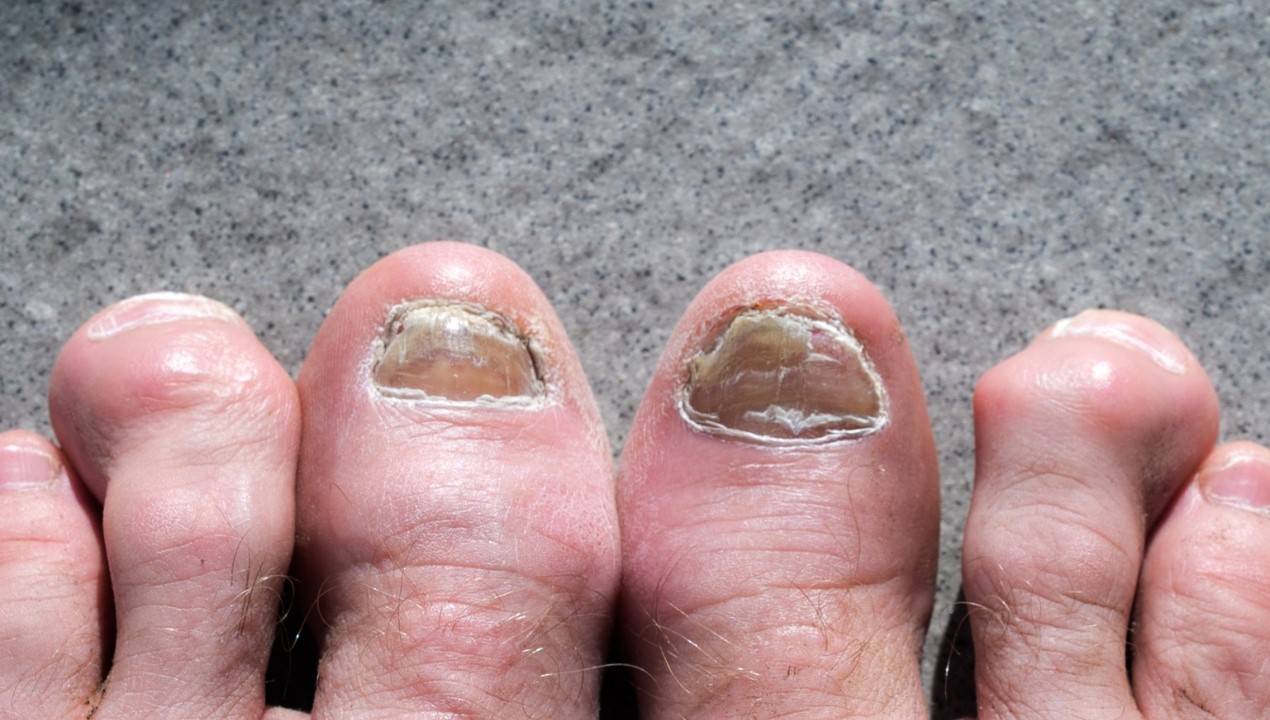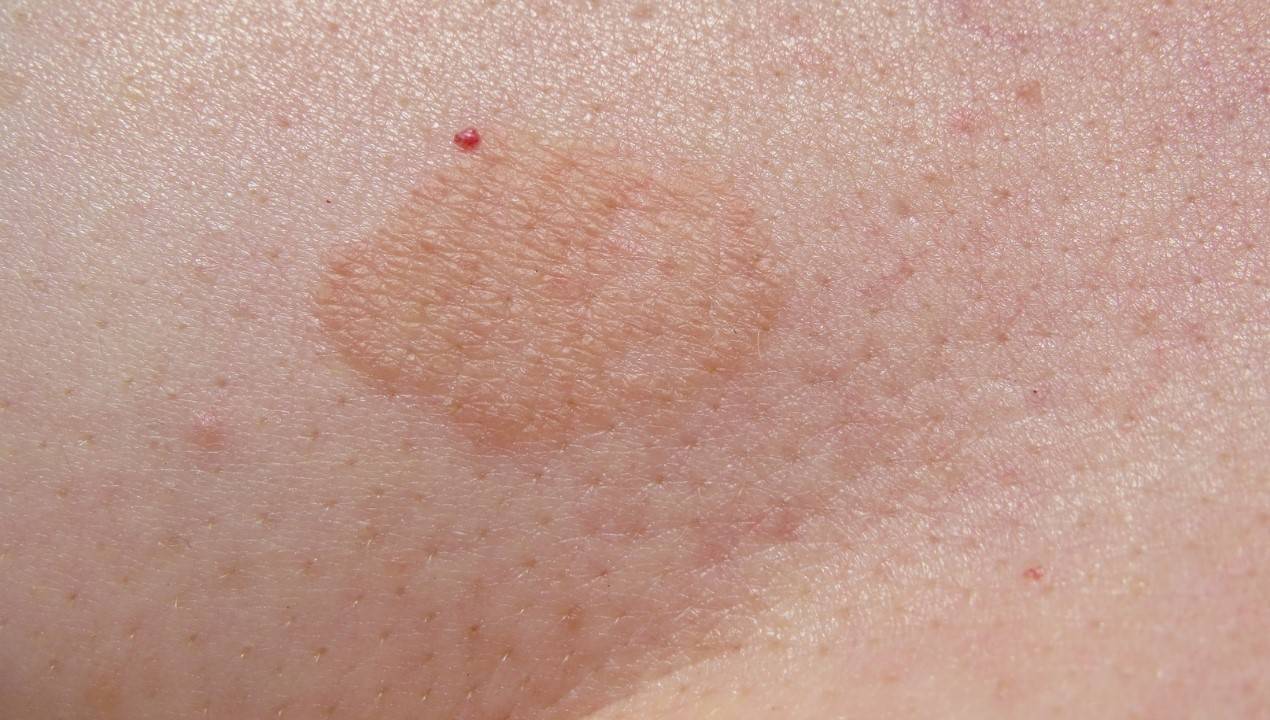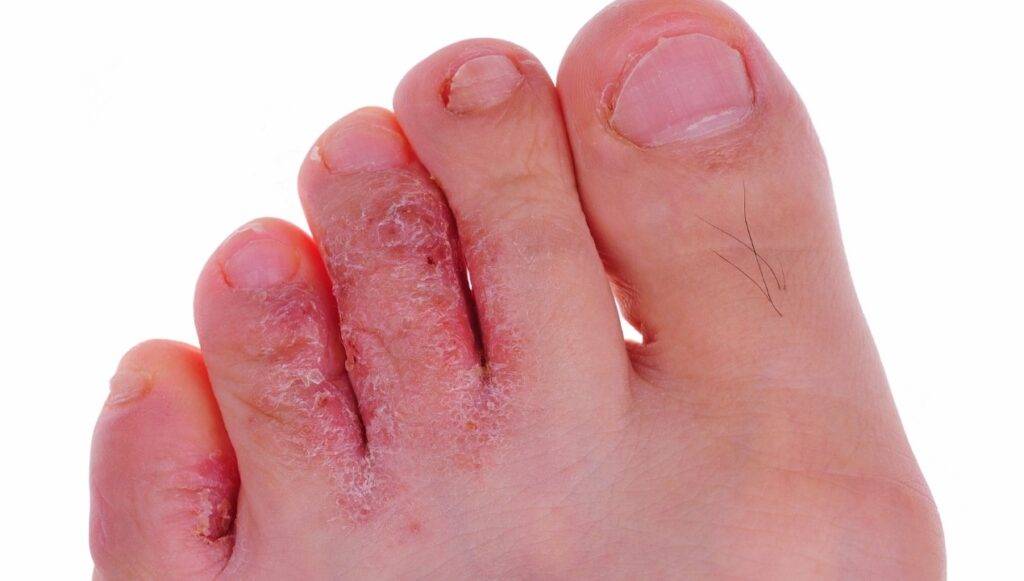Foot Fungus Pictures: Understanding Symptoms and Treatment Options
Foot Fungus Pictures: Identify symptoms like itching, cracking, and discoloration through visual examples. Learn about effective treatment options from over-the-counter to prescription remedies.
Key Takeaways:
| Symptom | Description |
| Foot Fungus Pictures show thick, discolored, crumbly toenails | A sign of fungal nail infection (onychomycosis) |
| Itchy, red, cracked skin between toes | Athlete’s foot (tinea pedis) fungal infection |
| Dry, scaly skin on feet | This could be a sign of a fungal skin infection |
| Treatment | Description |
| Over-the-counter antifungal creams/powders | For mild cases of athlete’s foot |
| Prescription oral antifungal medication | For severe or stubborn fungal infections |
| Appropriate foot cleanliness | Maintaining cleanliness and dryness of the feet helps in preventing the spread of infections. |
Fungal infections of the feet are not only uncomfortable and unsightly, but they can also be challenging to treat if left unchecked. Foot fungus pictures serve as a visual representation of these conditions, helping individuals identify the symptoms and seek proper treatment. In this comprehensive guide, we’ll delve into the world of foot fungus pictures, exploring the different types of fungal foot infections, their causes, and the available treatment options.
Understanding Fungal Foot Infections Through Foot Fungus Pictures
Fungal foot infections can manifest in various forms, each with its distinct visual characteristics. It provides a glimpse into these conditions, allowing us to better identify and understand them. Several prevalent fungal foot infections comprise:
Athlete’s Foot of Tinea Pedis

Among the most common fungal foot infections is athlete’s foot, medically termed tinea pedis. Images of foot fungus associated with this ailment typically show irritated, reddened, fissured, and flaking skin between toes or on foot soles. An athlete’s foot is highly transmissible and can propagate via direct contact or by sharing infected surfaces like gym floors or towels.
Nail Fungus

Perhaps the most visually striking foot fungus pictures are those showcasing nail fungus or onychomycosis. This condition is characterized by thick, discoloured, and often crumbly toenails. Foot fungus pictures of nail fungus can be truly cringe-worthy, but they also highlight the importance of seeking proper treatment before the fungus spreads further.
Fungal Skin Infections

While not limited to the feet, fungal skin infections, known as tinea corporis, can also affect the feet. Foot fungus pictures of this condition may show dry, scaly, and sometimes itchy patches of skin on the feet or between the toes.
Causes and Risk Factors for Fungal Foot Infections
Fungal foot infections can be caused by various factors, and understanding these causes can help individuals take preventive measures. Some common causes and risk factors include:
- Warm, moist environments: Fungi thrive in warm, humid conditions, making locker rooms, public pools, and sweaty shoes prime breeding grounds.
- Individuals with compromised immune systems, such as those with diabetes or HIV, have a higher vulnerability to fungal infections.
- Skin injuries: Even minor cuts or cracks in the skin can provide an entry point for fungi.
- Sharing belongings like towels, socks, or shoes with an individual who has a fungal infection can heighten the likelihood of spreading the infection.
Treatment Options for Fungal Foot Infections
Depending on the severity and type of fungal foot infection, different treatment options may be recommended:
- Over-the-counter antifungal treatments:
-
- For mild instances of athlete’s foot, non-prescription antifungal creams, powders, or sprays can provide effective relief.
- These products contain active ingredients like clotrimazole, miconazole, or terbinafine, which help combat fungal growth.
- Prescription oral antifungal medication:
-
- In cases of severe or stubborn fungal infections, such as nail fungus, a healthcare professional may prescribe oral antifungal medications.
- These medications, like terbinafine or itraconazole, work systemically to eliminate the fungus from within.
- Topical prescription antifungal treatments:
-
- For more severe cases of athlete’s foot or fungal skin infections, a healthcare professional may prescribe stronger topical antifungal creams or solutions.
- Proper foot hygiene:
-
- It’s vital to uphold proper foot hygiene to prevent and control fungal foot infections.
Maintain cleanliness and dryness of your feet and opt for breathable socks and shoes. Refrain from sharing items that meet feet.
Lifestyle Adjustments:
- Wearing sandals or open-toed shoes in warm, humid environments can help prevent fungal growth.
- Applying antifungal powder to shoes and socks can also help control fungal growth.
It’s important to note that while foot fungus pictures can aid in identifying potential fungal infections, a proper diagnosis from a healthcare professional is essential for determining the most appropriate treatment plan.
The Role of Foot Fungus Pictures in Awareness and Prevention
While foot fungus pictures may not be the most aesthetically pleasing visuals, they play a crucial role in raising awareness about fungal foot infections. By showcasing the various manifestations of these conditions, foot fungus pictures can help educate individuals on the signs and symptoms to look out for, encouraging them to seek medical attention promptly.
Additionally, they can serve as a powerful tool in promoting prevention. By familiarizing oneself with the telltale signs of fungal foot infections, individuals can take proactive measures to maintain proper foot hygiene and avoid the potential transmission or spread of these conditions.
Destigmatizing Fungal Foot Infections
Despite their prevalence, fungal foot infections are often a source of embarrassment or stigma for those affected. However, foot fungus pictures can help normalize and destigmatize these conditions by bringing their visual representation into the open.
By fostering a more understanding and supportive environment, It can encourage individuals to seek treatment without fear or shame, ultimately promoting better foot health and overall well-being.
List of Common Fungal Foot Infections:
- Athlete’s Foot (Tinea Pedis)
- Nail Fungus (Onychomycosis)
- Fungal Skin Infections (Tinea Corporis)
- Yeast Infections (Candidiasis)
- Moccasin-type Tinea Pedis
Table: Identifying Fungal Foot Infections
| Infection | Visual Characteristics in Foot Fungus Pictures |
| Athlete’s Foot | Itchy, red, cracked skin between toes and soles of feet |
| Nail Fungus | Thick, discoloured, crumbly toenails |
| Fungal Skin Infections | Dry, scaly, itchy patches on feet or between toes |
| Yeast Infections | Red, raw, and sometimes weeping skin |
| Moccasin-type Tinea Pedis | Thick, scaly skin on soles and sides of feet |
FAQs about Foot Fungus Pictures
What does a foot fungus look like?
Foot fungus can manifest in a variety of unsightly ways, and foot fungus pictures offer a visual representation of these conditions. One common form is athlete’s foot, which appears itchy, red, cracked, and peeling skin between the toes or on the soles of the feet. Another type is nail fungus, or onychomycosis, characterized by thick, discoloured, and crumbly toenails. Foot fungus pictures of this condition can be particularly cringe-worthy. Additionally, fungal skin infections, known as tinea corporis, can affect the feet, resulting in dry, scaly, and sometimes itchy patches of skin.
What kills foot fungus fast?
While there’s no magic cure for foot fungus, certain treatments can help eliminate the infection more quickly. Over-the-counter antifungal creams, powders, or sprays containing active ingredients like clotrimazole, miconazole, or terbinafine can be effective for mild cases of athlete’s foot. However, for severe or stubborn fungal infections like nail fungus, prescription oral antifungal medications like terbinafine or itraconazole may be necessary. These oral medications work systemically to eliminate the fungus from within. Additionally, maintaining proper foot hygiene by keeping feet clean and dry, and avoiding sharing personal items like towels or shoes, can help prevent the spread and recurrence of foot fungus.
What is the common treatment for foot fungus?
The most common treatment for foot fungus depends on the severity and type of infection. Mild instances of athlete’s foot often call for the use of non-prescription antifungal creams, powders, or sprays. These products contain active ingredients that help combat fungal growth. However, for more severe or persistent fungal infections, like nail fungus, A medical provider might recommend oral antifungal drugs or more potent topical treatments, such as terbinafine or itraconazole, work systemically to eliminate the fungus from within, while prescription-strength topical creams or solutions can target more stubborn infections. Regardless of the treatment, It’s essential to uphold proper foot hygiene to prevent and control fungal infections on the feet.
What are the 5 diseases caused by fungi?
Fungi can cause a variety of diseases, some of which can be serious. Here are five common diseases caused by fungi:
- Athlete’s Foot (Tinea Pedis): This fungal infection affects the skin on the feet, particularly between the toes, causing itching, redness, and cracked or peeling skin.
- Nail Fungus (Onychomycosis): This fungal infection affects the toenails, causing them to become thick, discoloured, and crumbly, as often depicted in foot fungus pictures.
- Ringworm (Tinea Corporis): Despite its name, ringworm is a fungal infection that causes a red, itchy, and circular rash on the skin.
- Candidiasis: This is a fungal infection caused by a type of yeast called Candida, which can affect various parts of the body, including the mouth (thrush), skin, and genitals.
- Aspergillosis: This is a serious fungal infection caused by the Aspergillus mould, which primarily affects the respiratory system and can be life-threatening for individuals with weakened immune systems.
It’s important to note that while some fungal infections may seem minor, they can lead to more serious complications if left untreated, especially for individuals with compromised immune systems.
Conclusion
While foot fungus pictures may not be the most visually appealing, they serve a crucial purpose in promoting awareness, early detection, and proper treatment of fungal foot infections. By familiarizing ourselves with these visual representations, we can take proactive steps to maintain foot hygiene, identify potential issues early on, and seek appropriate medical guidance when needed.



